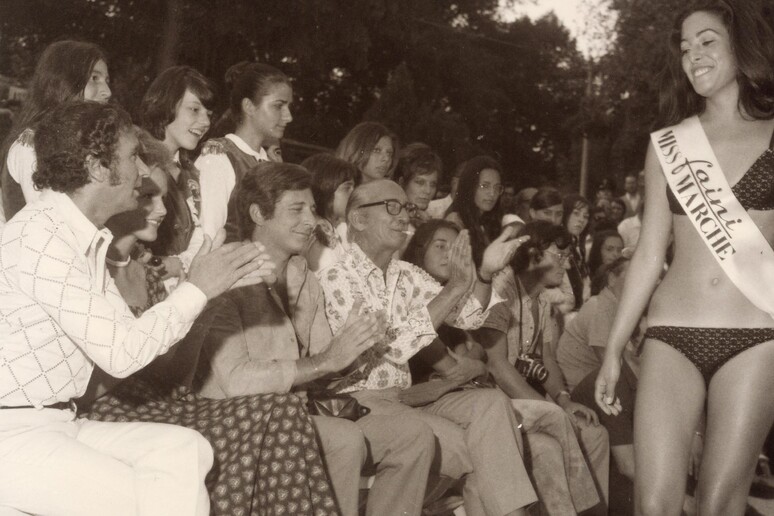The bikini will be turning 70 on
July 7.
This primitive two-piece bathing suit was first worn by
women from the Graeco-Roman world, as witnessed by parts of a
Sicilian mosaic - the 'bikini girls' from Piazza Armerina dating
back to the IV century BC - or urns and frescoes from 1,400 BC.
However, the 70-year birthday to be celebrated shortly pays
homage to the modern-day bikini, which this summer will be
colorful, sporty and with a palette evoking the Brazilian flag
in honor of the 2016 Summer Olympics in Brazil.
Those two pieces of fabric that have freed women's bodies
under the sun have changed in terms of fabrics, patterns and
more or less revealing styles over 70 summers.
When the style was first launched by French tailor Louis
Réard in 1946, it was donned by Hollywood icons like Ursula
Andress as Honey Ryder in the 1962 James Bond movie License To
Kill, a role that turned her into a worldwide sex symbol.
The name bikini is inspired by the Bikini Atoll in the
Marshall Islands at a time when the United States were carrying
out a series of nuclear tests.
According to Réard, his creation would have the impact of
an explosion on the public opinion.
Another French tailor, Jacque Heim, before him had created
the 'atome', a two-piece bathing suit that was subsequently
changed and reduced in size by Réard.
Réeard had a hard time publicizing the bikini as no model
wanted to wear such a tiny and sexy garment.
The tailor in the end had to hire a stripper from the
Casino de Paris to model for him.
Later, cinema played a key role in promoting the bikini as
an acceptable garment.
A model similar to the bikini - with high-waist shorts and
a top modeled like a large bra - first appeared in the 1920s and
1930s.
Initially, the bikini had a hard time gaining popularity in
puritan America and it took two decades for it to be accepted as
a suitable garment.
In the 1950s, it was still considered "scandalous" in Italy
and police patrolled the beaches to fine women who were showing
too much skin with daring bathing suits.
The bikini owes its popularity to film stars like Rita
Hayworth who wore such a sexy bikini in Gilda that a soldier
designed the bikini-clad actress sitting on a bomb - earning her
the nickname of "atomic Rita".
The first movie star to appear on screen in a sexy bikini
was Brigitte Bardot in the 1958 movie And god Created Movie.
It was followed by Beach Party in 1960 and hundreds of
photos of stars, including Jane Mansfield who posed for Life
Magazine.
The bikini thus started to appear on glossy magazines.
Finally, a 26-year-old Raquel Welch in 1966 wore a leather
bikini in the film One Million Years B.C. - showing a stunning
body and rebel face.
The rest is fashion and the silhouette of the two-piece
bathing suit was modelled on the common sense of propriety.
The bikini became trendy on the beach only in the 1960s when
being tanned became fashionable.
As a consequence, designers started to create versions of
the Saint Tropez model with a rounded bra.
The one-piece monokini style - the lower half of the bikini
without a bra - was first introduced in 1964 while the thong
made its appearance in the 1970s.
In the subsequent two decades, the bikini's silhouette
became increasingly skimpier and a tan was considered very sexy.
Over the last few years, however, retro-style bathing suits
are coming back on trend - suitable for all body shapes and
sizes.
ALL RIGHTS RESERVED © Copyright ANSA











